
CHAPTER 9
UNSHACKLE YOUR MIND
FALSE TEACHINGS AIDED BY THE SLAVE MASTERS
by
John Moore
It should now be very clear that much of what people are still being taught about Black people was written in collusion with the slave merchants who had European world domination in mind. It can now be seen how racism corrupts and distorts everything along its path. Black parents should further see the need to question everything that western education proclaims to be the truth, because as has been revealed, many things that were created by Black Afrikans have been given a white face.
In the attempt to display more of a family portrait, here is a picture of Amenhotep II (left and middle), the grandfather of King Tut and Pharaoh Akhenaten, and on the right is the nurse of Amenhotep II. Notice that they are clearly Black people.
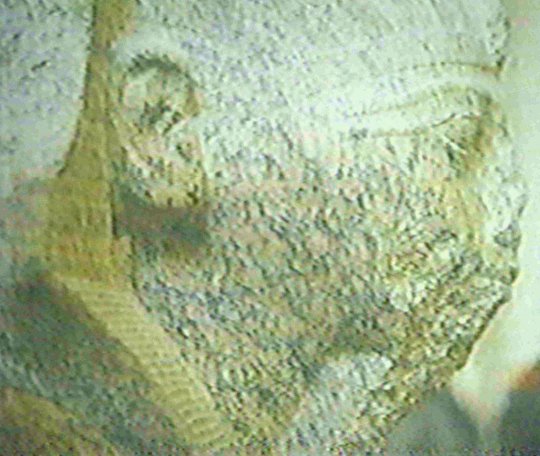
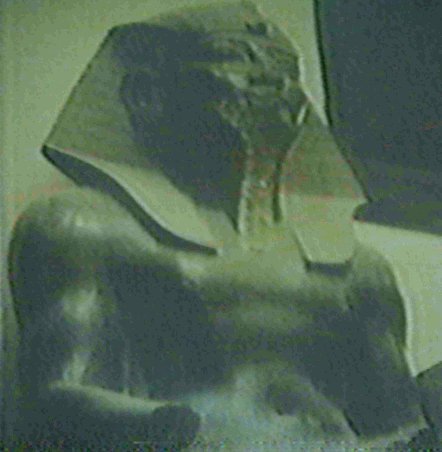
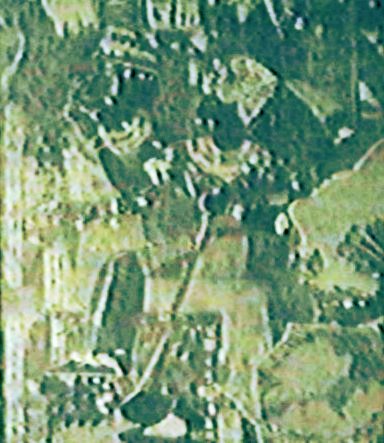
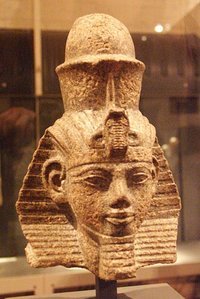
This is Amenhotep III, the father of Pharaoh Akhenaten and also the father of King Tut. Now there was some argument as to whether King Tut's father and Akhenaten's father were the same, which would make King Tut and Akhenaten brothers.
There is a red granite lion in the British museum on which King Tut said, "my father was Amenhotep III". As usual the Greeks transposed his name to Amenophis.
This is Amenhotep III with his wife Queen Tiy /Tiye. It is not known if she were King Tut's mother, but she was Akhenaten's mother, so King Tut and Akhenaten would be half-brothers at least.
Note that both are native Afrikans, and also note that the man and woman are portrayed as equals. She is sitting beside him with her hand around his waist, and it is in this playful mood that the carving comes to life.
Again this emphasizes the point that there was great equality of the sexes in the ancient Egyptian culture where women and men held equally prominent roles.
Here now is a close up of Queen Tiy (Tiye), the world’s first secretary of state, who as you can see was a very beautiful Black woman, the mother of Pharaoh Akhenaten and probably also the mother of King Tut.
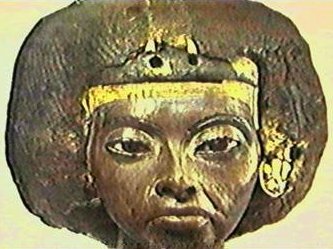
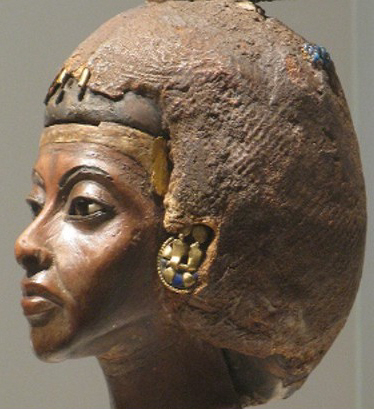
In this wall carving on the bottom right is another image Queen Tiye, but observe the destruction to the face of this Black Afrikan Queen because of the hatred against the reality that a Black Afrikan civilization was responsible for bringing light to the entire world.
In this carving is also Neferkheperre-waenre her son, whom we know as Amenhotep IV, Akhenaten and Amenophis - the Greek label.
Here are several images of Akhenaten. In a picture from the San Francisco Chronicle there was an article indicating that the writer was concerned about Akhenaten's physical appearance, suggesting that he had "swollen lips", or puckered lips and a fleshy nose. In other words, they were discussing his Negroid features as if they indicated some form of sickness or strange disease.
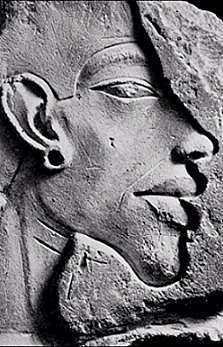
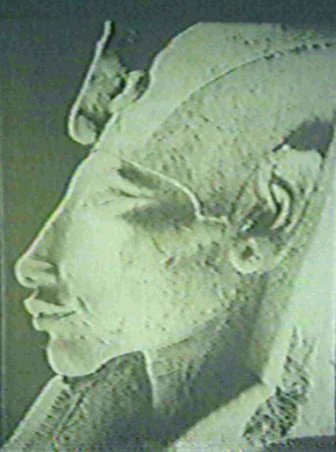
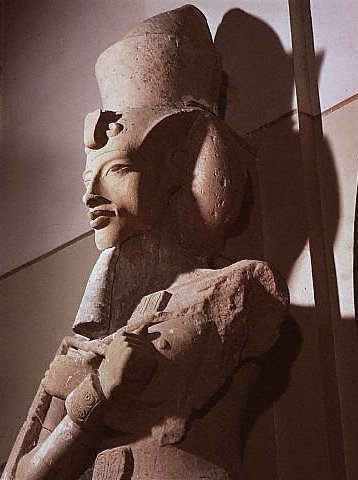
If these features represented some form of illness, then there are lots of Black people who even today are suffering from that same illness.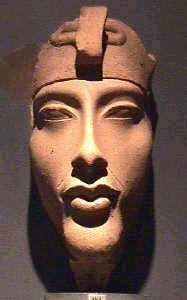
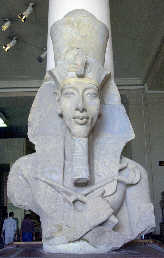
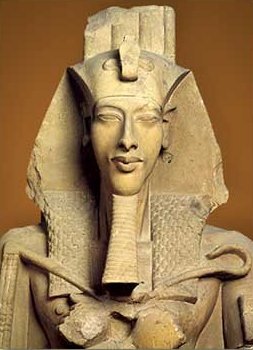
This is the famous picture of Akhenaten's wife Nefertiti which is known all over the world. During the 18th dynastic period, the Pharaohs, especially the Thutmosis went to Asia and Syria and married the daughters of kings as a political move and as a way of solidifying the empire.
Many Asian women were also brought in and were married to the ruling Pharaohs in Egypt. So this particular picture of Nefertiti which is displayed in the Berlin museum may seem less Afrikoid, but that is because she was a foreigner.
However, there is one detail that should be noted about this head, it was found in an artist's workshop on the floor without Nefertiti's name on it, so the assumption was that it must have been Nefertiti because it had a royal head dress, but it could just as easily have been one of Nefertiti and Pharaoh Akhenaten’s daughters.
On the right is another picture known to be that of Nefertiti which is located in her temple, but this image is not shown all over the world like the previous one. Notice that she has contracted the same kind of "sickness" that her husband was suffering from, which was supposed to be Frolic Syndrome.
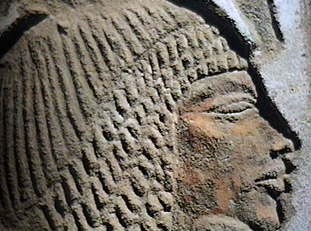
According to some doctors, this would cause a European to swell around the lips and so on, but the problem with this explanation is that Frolic Syndrome makes you sterile, and clearly Akhenaten was anything but sterile since he had six daughters.
In any case, it is evident that the physical features of Nefertiti as seen in her temple and in the carving on the left show her to be Black like all the other native Afrikans. This is an image of the Nefertiti that is known to be Akhenaten's wife which was found carved into the wall of her tomb.
Here are more images of sculptures and busts of Nefertiti found in museums around the world, with the last one reproduced using forensic methods.
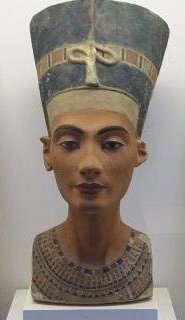
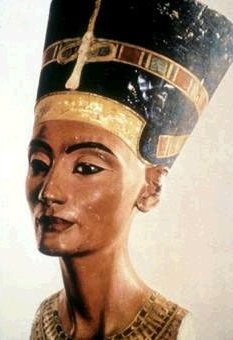
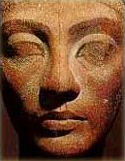
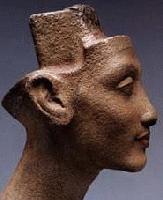
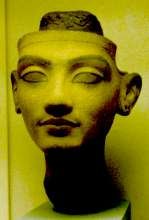
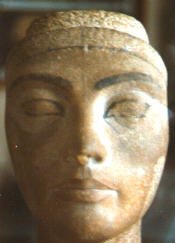
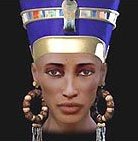
This is Akhenaten with his wife Nefertiti. Akhenaten was credited as having started monotheism - the belief in one God, but as indicated before, this was not the case. If a study of The Book of the Dead or "The Book of Coming Forth from Darkness into Light" which is the oldest religious literature in the world is done, it would be very clear to see that it comes from a position of total monotheism.
In fact there is no period in Egyptian history where there was not the one great God who was depicted as having many manifestations and many powers.
What Akhenaten actually gave to the world was not the concept of monotheism but the model of a particular type of monotheism which was later picked up and viewed as foreign. Akhenaten had turned that monotheism into a new form of monotheism and chose the sun as its symbol. He worshipped Aten which meant that the old bishops were being put out of power as there was a group of priests at Luxor called the priests of Amon (The Hidden God) who adhered to the older format. Imagine what would happen in the Baptist Church, the Methodist Church or the Catholic Church if there was suddenly a new religion established that would put all their priests out of power.
There was internal conflict over this conversion by Akhenaten which was really a move to dominate the country politically, and it is believed that Akhenaten might have been assassinated, as it appears that he met an untimely death, because he was seen to be taking the country into a new religious direction.
Today, this knowledge should be of vital importance to Black people since they call themselves monotheist, and Black people are in fact the most religious people on the face of the earth. So to know the history of the religion that is established is very crucial to understanding that religion.
For example, the idea that Afrikans were not monotheists before the Hebrew religion or the Christian religion is completely false, because Afrikans were always monotheist. The perception that Afrikans had no religion until missionaries from Europe and other places arrived to save these uncivilized, pagan Afrikans, therefore an eternal debt of gratitude is owed to them is again totally false and very misleading.
This is Meritaten, one of the daughters of Akhenaten and Nefertiti. Note the hair style.
When you see the actual royal wigs like this on the heads in the Cairo museum, they look as though they originated from those huge afros that were worn in the 1960's, even to the extent that they had peppercorn curls on the wigs.
However, the wigs were very typical, and depicted the native Afrikan hair style.
Here is another daughter of Akhenaten and Nefertiti. Whenever Black mummies are dug up or carvings are discovered with
big noses, big lips and elongated heads, to a European it may suggest something "abnormal" but it is very normal to an Afrikan. Instead of admitting that they are Afrikans, scholars would offer incredulous explanations, even suggesting that they were deformed Europeans as was the case with these daughters of Akhenaten.It was stated that Akhenaten was "deformed" because of his unusually shaped body and certain features about his face. His daughters were also supposed to be "deformed" because of their elongated heads, and it was declared that no normal person could have a head that would be so elongated.
The truth is that all over the Afrikan Nile Valley and with many Black people all over the world, this is the most typical head shape among Afrikan people if the shape of the head is to be properly studied. The following images were taken from different parts of the Afrikan continent. The same characteristics would be true for almost any Black person seen, so it is not even necessary to go outside the Nile Valley to explain what is seen on the monuments.
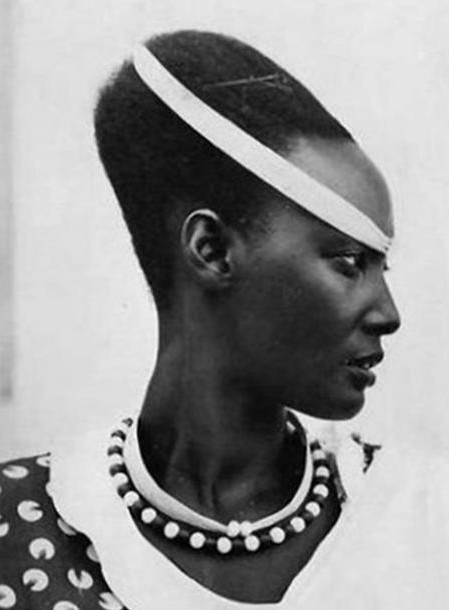
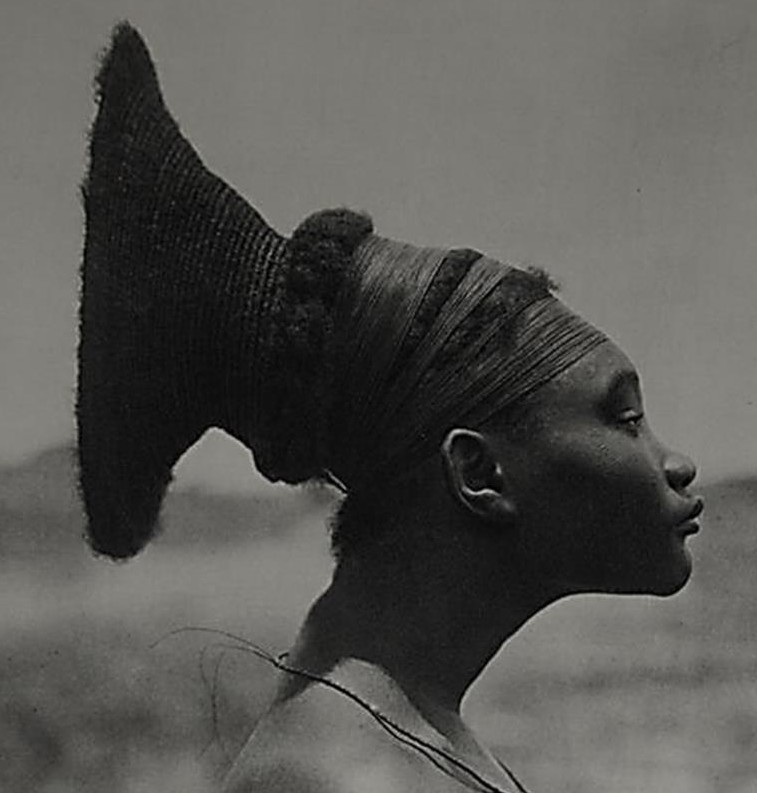
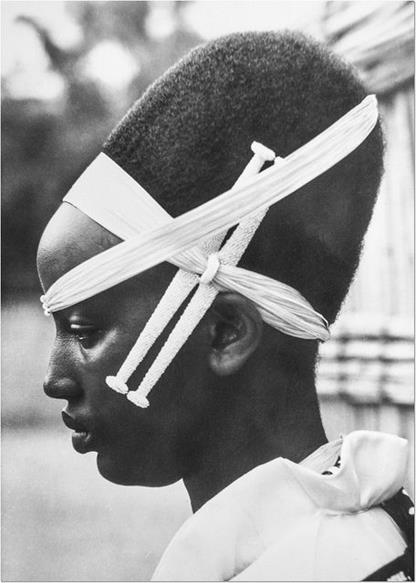
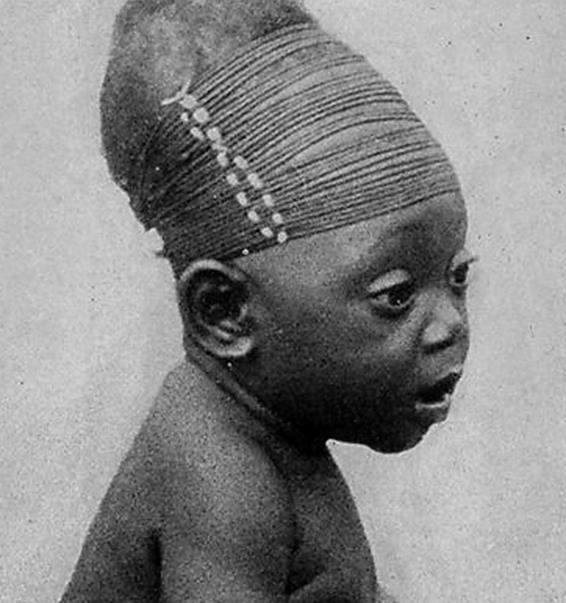
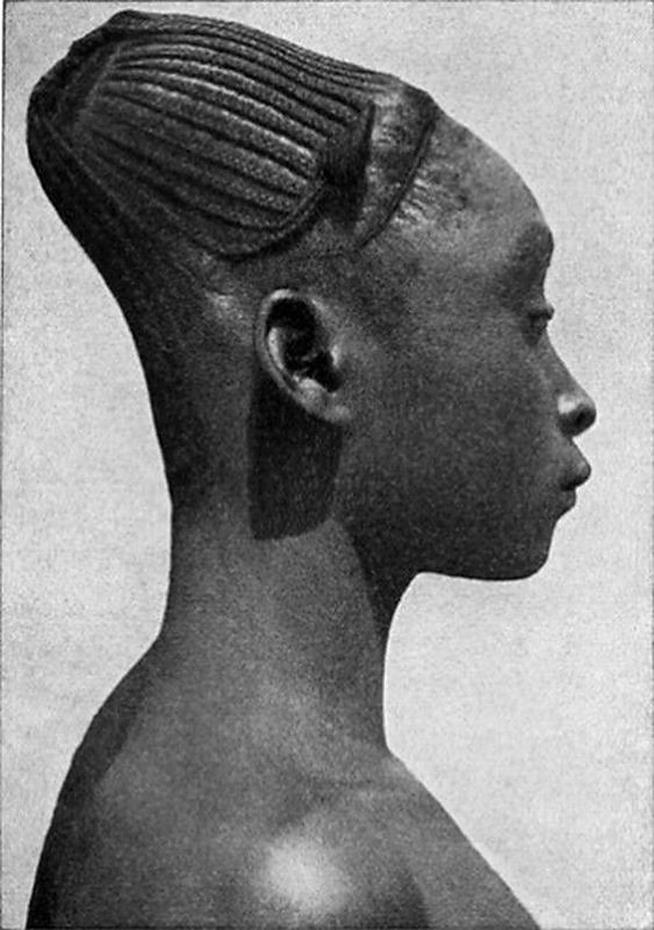
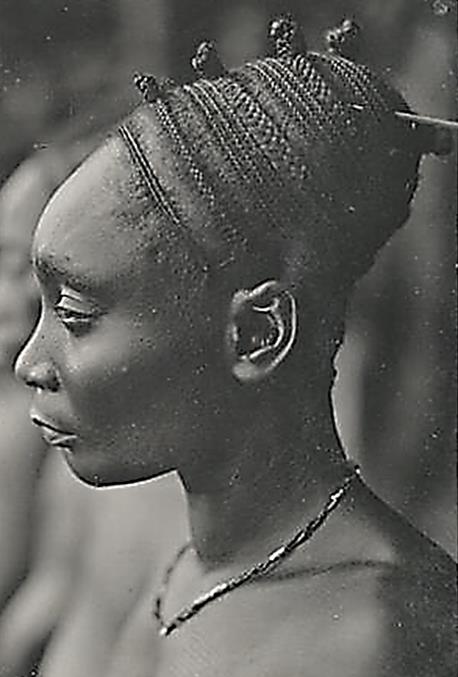
THIS IS THE MOST TYPICAL HEAD SHAPE AMONG AFRIKANS ALONG THE NILE VALLEY
This is Akhenaten's brother King Tut, who as a young boy at the age of nine assumed control, but when he became a teenager it appeared as though the priesthood might have reached him too, because in the beginning he started out believing in the religion of Aten that his brother had started, which was symbolized by the sun. He later changed his name from Tutenaten to Tutenkamen which meant that he eventually went back to the old religion.
In other words, King Tut had slid back from Amon to Aten, so this meant that the Amon priesthood which was in control during the 18th dynasty at the city of Luxor was back in power again. Shortly after that, King Tut's uncle Ay came to the throne.
Now take a look at King Tut's mummy on the left, and note that he has the same "head problem" that his little sisters had, and then compare it to the Golden Masks.
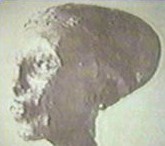
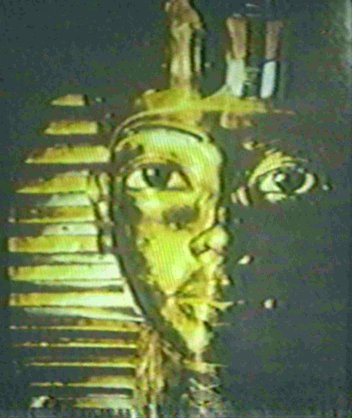
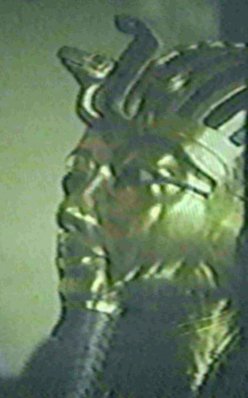
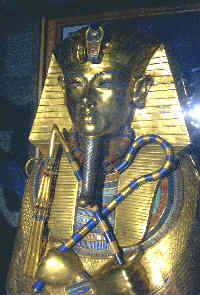
This is the red granite lion located in the British museum that was mentioned earlier. The inscriptions on this lion state that his father was Amenhotep III, therefore his brother would have been Amenhotep IV since both of them had the same father.
This crown was part of King Tut's jewellery. Note the snake and the vulture. Everything in ancient Afrika was symbolic. For example, the vulture can assimilate diversity; it eats a lot of different kinds of dead matter and assimilates or converts it into something else.
The snake symbolizes the splitting function which leaves you compelled to wonder if they did not have some indication of how the brain worked when it is observed that one side integrates like a vulture and the other side disintegrates or dissects like a snake which has a forked tongue and also a forked penis. Notice also the snake's body going across the top of the head, which is similar to some of the sutras that go across the top of the brain dividing it into two hemispheres, so that we have the left brain and the right brain functions which can be associated symbolically with these two animals, both of which when the crown is worn, appears just above the third eye or the pineal gland on the head of the king.
These are boomerangs that came from the tomb of King Tut, and date back to the 18th dynastic period. Most people are inclined to believe that the boomerang is indigenous to Australia among the aboriginal or native populations which may be the case, but these were found in Kemet even earlier than they were found in Australia, which indicates maybe a possible cultural connection between Australia and Afrika.
Here again is a copy of the golden mask of King Tut as seen through the eyes of his sculptor. Keep this image in mind as you look at the picture of an advertisement in the Los Angeles Times about a king Tut exhibit in Los Angeles. Look at the real thing and then compare it to what an artist sketches. This should give a good reason as to why artist’s drawings should never be accepted as accurate, but the original document or carving should always be checked whenever possible.
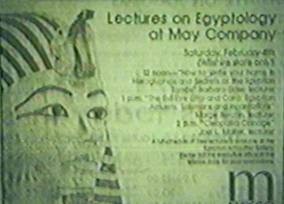
This is the way King Tut looked to the artist in the Los Angeles Times (left). Note that he turns Caucasoid or white, which is what frequently happens with Egyptian figures whenever they appear in sketches. For this reason, the acceptance of sketches used in text books is not recommended. Whenever possible it is better to have photographs or better still, the actual objects, because even in photographs it is possible that the colour may not a true depiction of the original colour.
This is the famous image of Maherpra or Maiherpri, from the 18th dynasty from one of the coffins of Valley of the Kings. There was a plate which suggested that he may have been the son of Thutmose IV and a Negress, according to Maspero the curator.
In a copy of the sacred text of Per-em heru (hru) or The Book of the Dead, so titled because the treasure hunters were stealing from the tombs of the dead, Maherpra is depicted with his face Black instead of the normal red. A detailed examination however revealed that he was indeed Negroid but not really a Negro according to the skeptics, so when Maspero realized that Maherpra was Black, he had to fabricate a statement to place on the wall of the Cairo museum to accompany the image, hoping that visitors worldwide would see it through his eyes - a Negro that is not really a Negro.
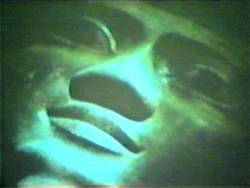
This artefact was being excavated and televised, but when they were about to open the tomb, for some unexplained reason the sarcophagus of this great vizier was hidden from view.
However, to give an idea of the ridicule and ever present racism that still permeates our society, note how the nose and lips were smashed off and then put in the Metropolitan museum in New York City. This shows that even today the historical and cultural legacy of the Afrikan people continues to be denigrated, desecrated and demeaned in all forms and fashions.
It is reported that Napoleon instructed his troops to use the nose and mouth of this Great Sphinx as target practice this may be the reason those parts are now missing because they were shot off.
Below are images of Senusret III, 5th king of the 12th dynasty. In the first image the nose is intact, but in the second one the nose is destroyed by those whose intentions were to destroy the facial features to hide the Negro identity as was the case with most of the artefacts. The last image is that of King Amenemhet III also with his nose dug off `in the attempt to hide his Afrikan features.
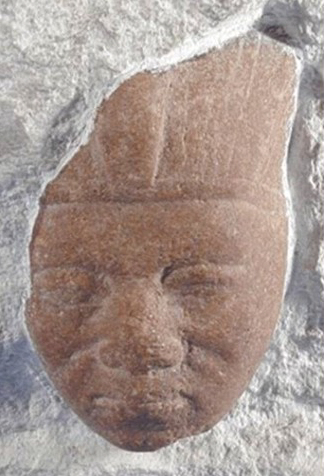
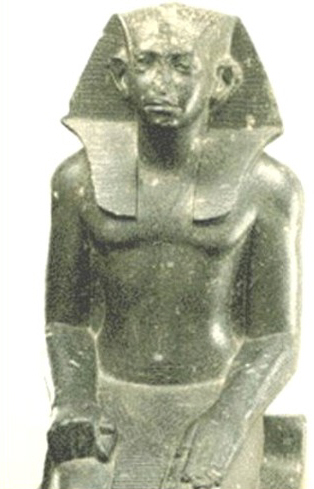
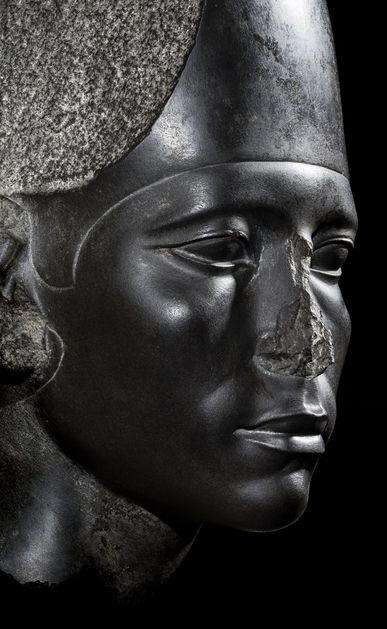
© John Moore - Barbados, W.I. (March 2000) ©. All rights reserved.
